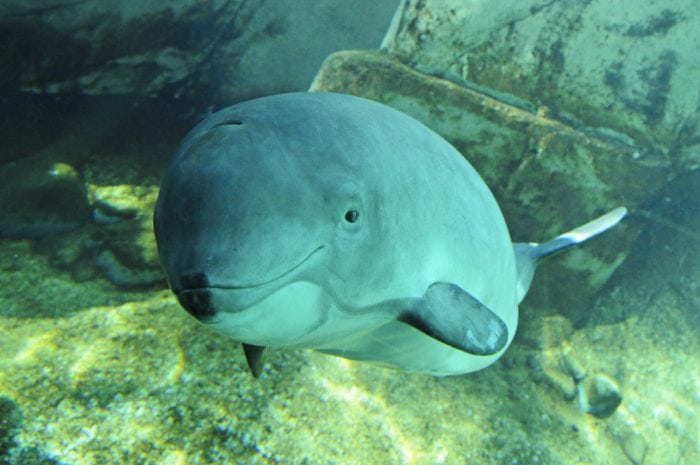
All animals have a fundamental need for undisturbed sleep. It is essential for maintaining optimal brain function. This is undoubtedly why sleeping animals, qualify for special protection under legislation around the world, including the European Union’s Habitats Directive1, most commonly under the term “resting,” as are the locations where animals sleep.
Defining sleep, or even rest, may be somewhat tricky in species like cetaceans and migrating birds that have evolved the unusual practice of unihemispherical sleep, where only half of their brain sleeps at a time. In cetaceans this is not only due to their constant need for movement, but also to allow them to breathe voluntarily, rather than automatically as we do.
We know this from studies of sleep in cetaceans in captivity. However, the logistical constraints of trying to study this in animals that spend only a fraction of their time at the surface of the ocean have limited investigations of this behavior in the wild to just a few primarily anecdotal reports. We thus have little idea of exactly where or when cetaceans sleep.
Fortunately, tagging devices have now developed to the point where the data collected from wild animals can be assessed against published criteria for defining sleep behaviorally. Piggy-backing on ongoing satellite tagging operations with harbor porpoises in Danish waters, seven acoustic and high-resolution behavioral data loggers were deployed on porpoises in 2010 and 2011, producing combined acoustic-behavioral recordings of up to 72 hours.
Analysis of the combined information produced revealed dives with a largely parabolic shape that had significantly reduced bioacoustic activity and a stereotyped, low-energy behavioral pattern (meeting 2 criteria for sleeping). Nearly half of the parabolic dives were devoid of vocalization (echolocation clicks) and click rate normalized to individual-animal means were also significantly lower than during other dives. They involved low vertical ascent and descent rates, contained less fluking, turning and rolling and were comparatively very invariable in their maximum depth, being largely within 1m of 7m in depth (meeting one further criterion: a dedicated “location” for the behavior).
Similar dives can be seen in the literature for other species (e.g., finless porpoises2 and beaked whales3,4), although many such studies have focused instead on the more energetic foraging dives in their records. This indicates that to properly protect cetaceans under laws globally, further studies into these dives are needed in various species.
However, there are other implications of this work. The porpoises in this study spent up to 18% of their time underwater engaging in these dives and did so for periods that extended to at least 24 minutes in length. This represents a period during which they would be undetectable to passive acoustic monitoring systems for the purpose of either research or mitigation. Furthermore, without echolocation at normal levels the porpoises that continue to move, albeit slowly, would be unable to detect obstacles such as fishing nets. This leaves them more vulnerable to bycatch in any fishing nets at the appropriate depths.
Regardless of exactly how human activity interacts with these dives, it is likely that environmental impact assessments conducted to date have been underestimating potential impacts on cetaceans as sleeping, with all the associated increased vulnerabilities, and its disruption has received little or no consideration.
These findings are described in the article entitled Silent porpoise: potential sleeping behaviour identified in wild harbour porpoises, recently published in the journal Animal Behaviour. This work was conducted by Andrew J. Wright, Tomonari Akamatsu, Signe Sveegaard, Rune Dietz, Kim Mouritsen, and Jonas Teilmann from Aarhus University, and Tomonari Akamatsu from the National Research Institute of Fisheries Science.
References:
- Commission of the European Communities. (1992). EC Habitats Directive. Council Directive 92/43/EEC of 21 May 1992 on the conservation of natural habitats and of wild fauna and flora. Commission of the European Communities. Retrieved from http://ec.europa.eu/environment/nature/legislation/habitatsdirective/index_en.htm.
- Akamatsu, T., Wang, D., Wang, K., Li, S., & Dong, S. (2010). Scanning sonar of rolling porpoises during prey capture dives. Journal of Experimental Biology, 213, 146e152. https://doi.org/10.1242/jeb.037655.
- Aguilar De Soto, N., Madsen, P. T., Tyack, P., Arranz, P., Marrero, J., Fais, A., et al. (2012). No shallow talk: Cryptic strategy in the vocal communication of Blainville’s beaked whales. Marine Mammal Science, 28(2), E75eE92. http://onlinelibrary.wiley.com/wol1/doi/10.1111/j.1748-7692.2011.00495.x/full.
- Tyack, P. L., Johnson, M., Aguilar de Soto, N., Sturlese, A., & Madsen, P. T. (2006). Extreme diving of beaked whales. The Journal of Experimental Biology, 209, 4238e4253. https://doi.org/10.1242/jeb.02505.









